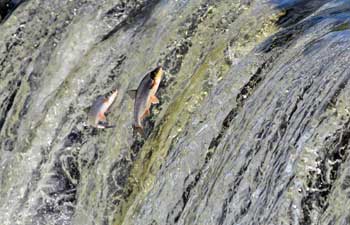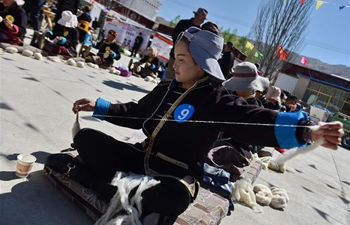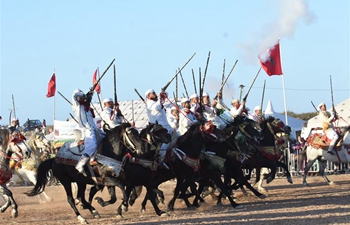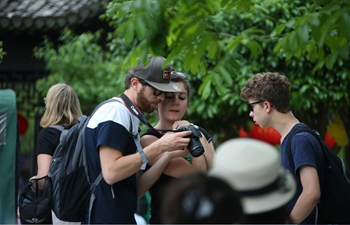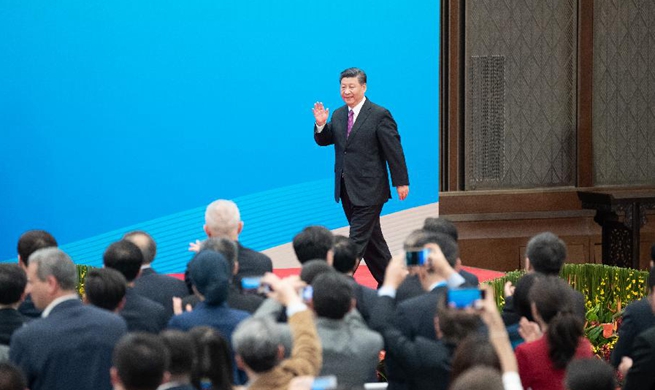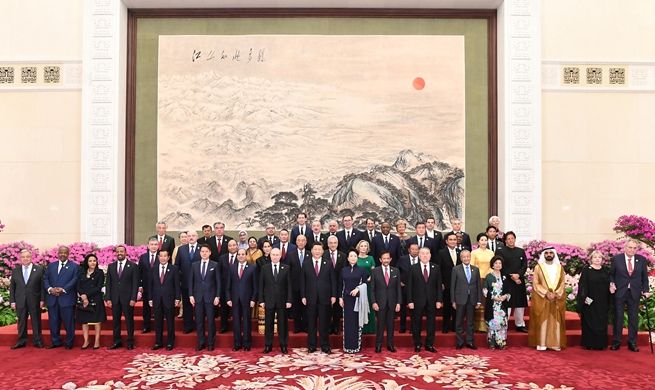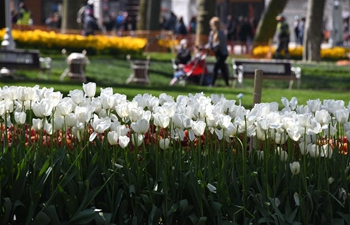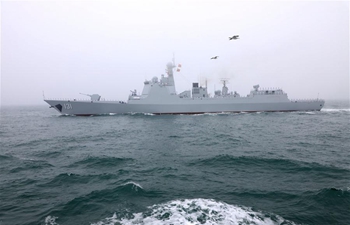WARSAW, April 27 (Xinhua) -- A documentary featuring newly discovered home-movie footage filmed at the Warsaw Ghetto is set to be released in Poland.
In his film "Warsaw: A City Divided", which will premiere next month, Eric Bednarski explores the topic of the notorious Ghetto and its influence on the Polish capital by interweaving rich material from the past with glimpses of the present.
"It's a film about Warsaw, the Warsaw Ghetto, and never seen before 8mm found footage, not shot by the Nazis - a story of the division and destruction of the City," Bednarski told Xinhua in an interview.
"It is also the story of Warsaw remembering its tragic past, and the people who still live in Warsaw who remember the Ghetto and the Nazi occupation," he added.
Throughout much of 1941, a Polish 8mm film enthusiast shot an extraordinary 10-minute film. Making use of a Ghetto pass, and risking arrest and possible death, he filmed from both sides of the Ghetto walls, showing everyday life soon after the division of Warsaw during the Nazi German occupation.
"That film is so unique and so powerful that it motivated me to explore the topic of Nazi-occupied Warsaw, the Warsaw Ghetto, and the division and destruction of the city," Bednarski explained.
He said the film material acts as a silent witness to the tragedy of the wartime division of the city and the murder of its inhabitants.
"For starters, we are looking at the faces of people who were for the most part murdered by the Nazis," Bednarski said.
"This is haunting. We also see a city that simply doesn't exist anymore. The everyday life we see in Ghetto is powerful and moving. This is footage not shot by Nazi occupiers, but by a Pole, who was able to get a pass into the Ghetto."
Before the Second World War, over one million people, of whom almost 400,000 were Jewish, lived in Warsaw. Soon after the German invasion, a Ghetto was forcibly created by the Nazis to hold approximately 450,000 Jews from across Poland and other parts of Europe. Almost all of them would perish in the Holocaust.
When reviewing the 8mm film, Bednarski was horrified at a 'truly shocking' scene where young Jewish children are seen smuggling food from the 'Aryan' side, as the Nazis called it, to the 'Jewish' side.
"They are doing this through holes in the wall that were used for rainwater to run along the streets, which had been divided by the Ghetto wall.
"At one point several of these children are cruelly beaten by police. These are desperate starving children trying to survive, trying to help their families, but they are brutally beaten. I've seen this film hundreds of times now, but every time those scenes are difficult for me to watch."
The documentary also focused on two of the very few survivors of the Warsaw Ghetto - Agata Boldok and Krystyna Budnicka, both among a small number of survivors still alive.
"Their stories are heartbreaking, and both women are strong and inspiring," Bednarski told Xinhua.
"They evoke the setting up of the Ghetto and reflect on how it affected the city itself, their own lives and the lives of their respective families."
Another character in the film is Polish-Christian man by the name of Zygmunt Walkowski, whose family was forced out of their home by the Nazis, as the neighbourhood in which they lived became part of the Warsaw Ghetto.
Bednarski's previous film work with the National Film Board of Canada has earned him a Gemini Award and a Writers Guild of Canada Award nomination, and he was awarded the Decoration of Honour "Meritorious for Polish Culture" by the Polish Ministry of Culture and National Heritage in 2015.
The film will premiere on May 11 at the 16th Millennium Docs Against Gravity Festival in Warsaw.
